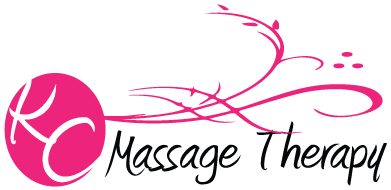Five ways a massage cures the blues
The power of human touch is a power that cannot be overstated. We all know that touch through massage therapy heals by soothing sore muscles and improving blood circulation, but did you know there are a few ways massage also cures the blues? Here are 5 of them:
- Massage reduces stress - cortisol (known as “the stress hormone”) builds up in your body when you are anxious, leading to depression, higher blood pressure, and a lower immune system. Massage therapy combats cortisol by increasing the flow of good hormones like serotonin and dopamine to your brain, causing instant relief from symptoms of depression and sadness.
- Massage remedies “structural collapse” - structural collapse involves a shortening of the abdominal muscles and a tightening of the diaphragmatic arch which pulls the chest down and forward, limiting its ability to expand during breathing.
There is an additional medial rotation of the shoulders and internal rotation of the arms resulting in a kyphosis that further restricts breathing. Without the support of the thoracic region, the head and neck will move forward and down and further into collapse.
All this distortion of the upper body will lead to further distortion in the lower body and give the structure an image of being fully collapsed. The degree of structural collapse will depend upon the severity of depression and its duration.
Applying massage with the goal of releasing the structural collapse associated with depression will bring the client from a hopeless, helpless collapsed structure to one that is supported and erect. This sense of support will give the client feelings of being stronger and more capable of dealing with the issues of their depression. [source]
- Massage encourages relaxation - When we are stressed, anxious, sad or depressed, our bodies naturally tense up. This impedes our brain’s ability to think clearly, make rational decisions and to feel happy. As we relax, blood flow is increased to our brain, and our emotions improve.
- Massage connects us with the human touch - skin to skin contact is a fundamental physical act that bonds us to another human being. Many believe the sense of touch is a way of communicating through the skin. While receiving a massage, the body responds to the relaxing of the muscles and tendons. Toxins stored in the muscles have been massaged out of the muscles and are flushed out of the body. Natural endorphins course through the body, easing minor aches and pains. Psychologically, the body responds to the gentle touch of another human being. With a massage, you feel pampered and cared for. [source]
- Massage increases success in the workplace - Workplace stress and low productivity play a significant role in how we feel every day. Massage takes the blues way brought on by feeling drained and overworked.
Consider this: In a study performed by the International Journal of Neuroscience, Twenty-six adults were given a chair massage, and 24 control group adults were asked to relax in the massage chair for 15 minutes, two times per week for five weeks.
On the first and last days of the study, they were monitored for EEG, before, during and after the sessions. Also, before and after the sessions they performed math computations, they completed POMS Depression and State Anxiety Scales, and they provided a saliva sample for Cortisol. At the beginning of the sessions, they completed Life Events, Job Stress, and Chronic POMS Depression Scales.
The findings were remarkable: the massage group showed decreased frontal alpha and beta power (suggesting enhanced alertness); the massage group showed increased speed and accuracy on math computations, anxiety levels were lower following the massage but not the control sessions, and salivary Cortisol levels were lower following the massage but not the control sessions. At the end of the five-week period, depression scores were lower for both groups, but job stress scores were lower only for those who had a massage!
